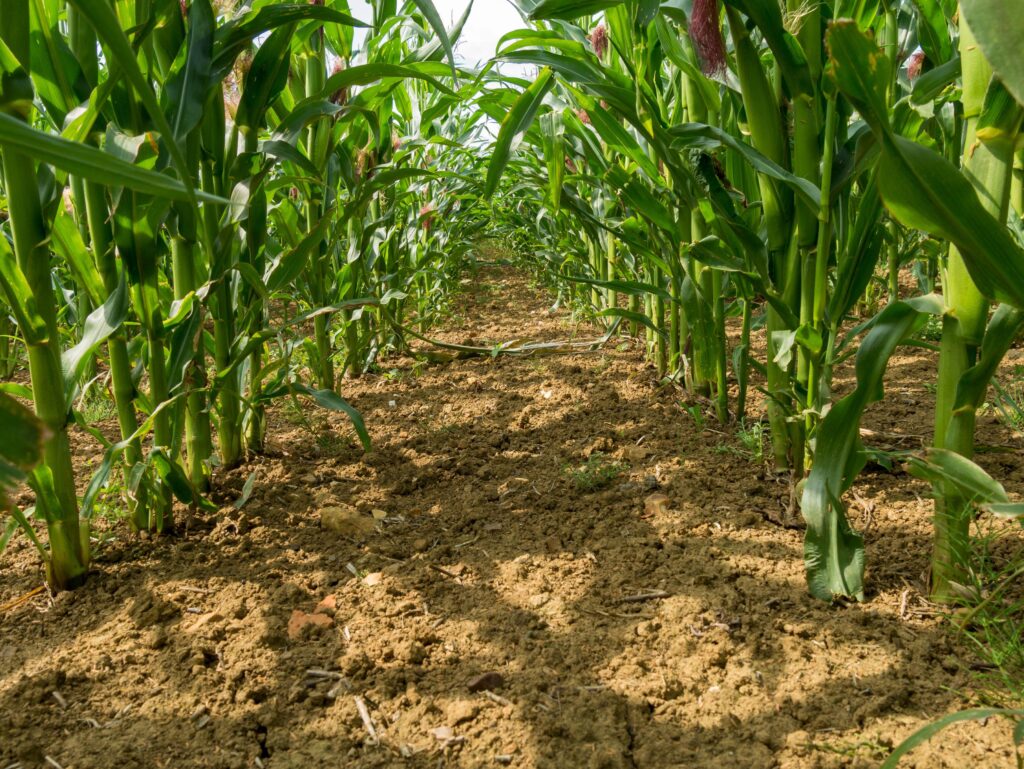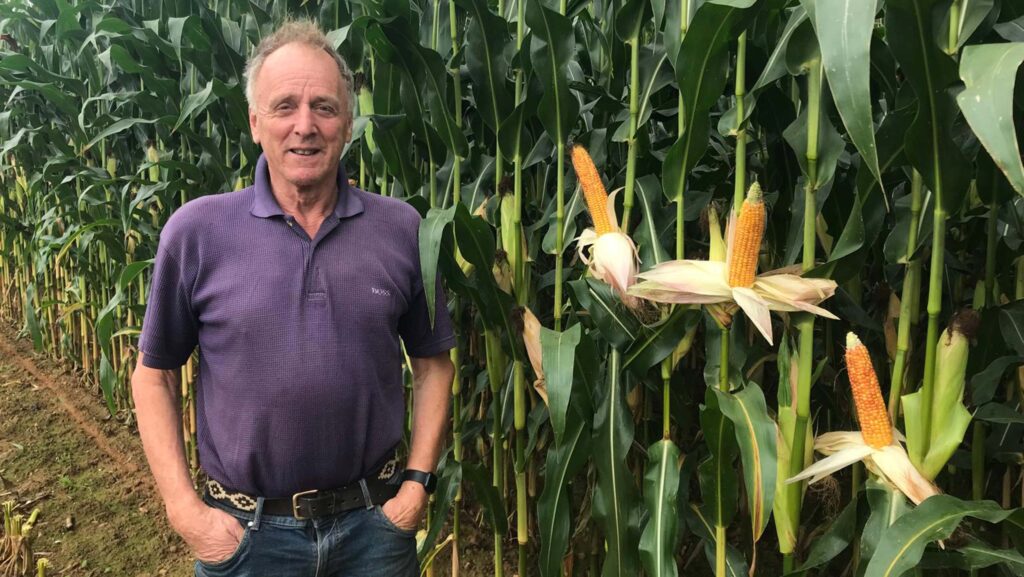Maize watch: New variety impresses in moderate growing year
 2K1GFJJ View between rows of sweet corn (maize) crop stems growing in farm field, Leicestershire, England, UK
2K1GFJJ View between rows of sweet corn (maize) crop stems growing in farm field, Leicestershire, England, UK Maize performed better than feared for a Sussex dairy herd, including bumper results for a new variety.
Farmer John Hancock at Hurlands Farm, near Petworth, plans to grow new variety Emeleen again after a strong performance in a challenging year.
He was hugely impressed by the production of Emeleen on the farm’s light greensand soils and is already feeding the maize to his Holstein-Friesian cows.
See also: Farmer Focus: Maize chopping and autumn drilling has begun
Farm facts: Hurlands Farm, Petworth, Sussex
- 222ha farmed
- 40ha maize
- 8ha of wheat
- 250 Holstein Friesian cows giving 10,000 litres
Crops were drilled and harvested at the usual times, despite the farm being hit by cold and wet spring conditions, explains John.
A small (1.6ha) field of Emeleen managed 74-75t/ha, outperforming the tried and tested variety Ballade on the rest of the maize ground, which yielded a disappointing 40t/ha.
“Usually we do better than that, but I blame the wet, cold, spring. Growth in May was very slow,” he says.

John Hancock says he will grow new variety Emeleen again © Neil Groom
Harvest
Timings of drilling and harvesting were normal – the first week of May and mid-September – and John was surprised that harvest dates were normal for the farm, despite the slow crop progress early on.
Maize performance at Hurlands Farm |
||||
|
Dry matter |
Starch |
Yield |
Film |
Irrigation |
|
32-34% |
Not tested |
40-45t/ha (Ballade) |
No |
No |
“It was amazing how quickly the maize ripened this year,” he says. “We had the coldest summer we’ve had for many years and yet the maize seemed to mature quite early. We were 2-3% drier than I would like. I like it at 30% dry matter for clamping.
“We had two dry weeks in August just when the cobs were filling. We should have watered it then as we do have irrigation facilities, but we didn’t.”
Maize in the diet
Historically, the farm grew maize as a backstop in a dry summer. Maize was strip-grazed in August once the cob came out, typically at the end of July.
Now the maize is fed with grass silage, in a system that makes the most of the light land by keeping cows outside, grazing grass in summer and kale in winter.
Varieties
The two varieties grown are known for the following attributes:
Ballade
- Early cob maturity often contributes to early harvesting
- Makes good balanced silage with lots of leaf bulk, particularly if harvested slightly green
- Versatile and consistent
Emeleen
- Trial work has shown it works well on lighter soils
- Good vigour and early season growth for fast establishment
- Tipped to be a good variety on favourable sites
- Second-highest yielder in Niab descriptive list trials 2022
